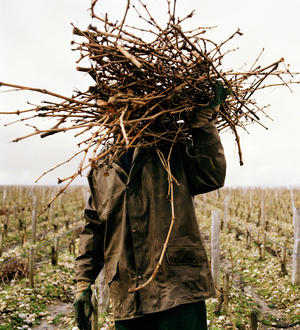2017 Meursault, Les Gouttes d'Or, 1er Cru, Lucien Le Moine, Burgundy
- White
- Dry
- Full Bodied
- Chardonnay
For laying down
Product: 20178056946
Colour White
Sweetness Dry
Vintage 2017
Alcohol % 13
Maturity For laying down
Grape List Chardonnay
Body Full Bodied
Producer Lucien Le Moine
About this wine

Chardonnay
Chardonnay is often seen as the king of white wine grapes and one of the most widely planted in the world It is suited to a wide variety of soils, though it excels in soils with a high limestone content as found in Champagne, Chablis, and the Côte D`Or. Burgundy is Chardonnay's spiritual home and the best White Burgundies are dry, rich, honeyed wines with marvellous poise, elegance and balance. They are unquestionably the finest dry white wines in the world. Chardonnay plays a crucial role in the Champagne blend, providing structure and finesse, and is the sole grape in Blanc de Blancs.
Find out more

Lucien Le Moine
Lucien Lemoine is a small, haute-couture négociant house was established by Mounir and Rotem Saouma in 1999. Their aim is to bring to the market each year a maximum of 100 barrels of premier cru and grand cru burgundy which they have raised in their vaulted cellars in Beaune according to their most exacting standards of élévage. There is no winemaking involved as the wines reach them after fermentation. Often there is but a single cask of each wine – their 100 barrels of 2007 cover 68 different wines. There are no contracts with growers, though they will frequently return to the same sources, and no specific requirements as to how the grapes should have been grown or the wines made. Indeed it was very interesting to taste a line-up of Vosne-Romanée wines and see some which had evidently been vinified with stems and others not. According to Rotem, her husband’s strength is that he can sniff out the quality and style of a vintage at a very early stage. They work closely with their barrel supplier, Stéphane Chassin, to ensure the right barrels for the style of a given wine, using wood from the Jupilles forest which is apparently the slowest growing in France, thus giving the most fine-grained wood. One hundred per cent new wood is used. The general recipe, although of course each vintage and if need be each wine may require its own treatment, is to ensure late malolactic fermentations, to stir up the plentiful lees for both red and white wines, to rely more on CO2 than SO2 to preserve the wine from oxidation and to maintain the wines unracked in new barrels until the final preparation before bottling. Typically the wines end up with a soft, sweet-fruit character but otherwise little other evidence of new oak, and those I have tasted have displayed good typicity of their vineyard origins. They are not cheap.
Find out more
